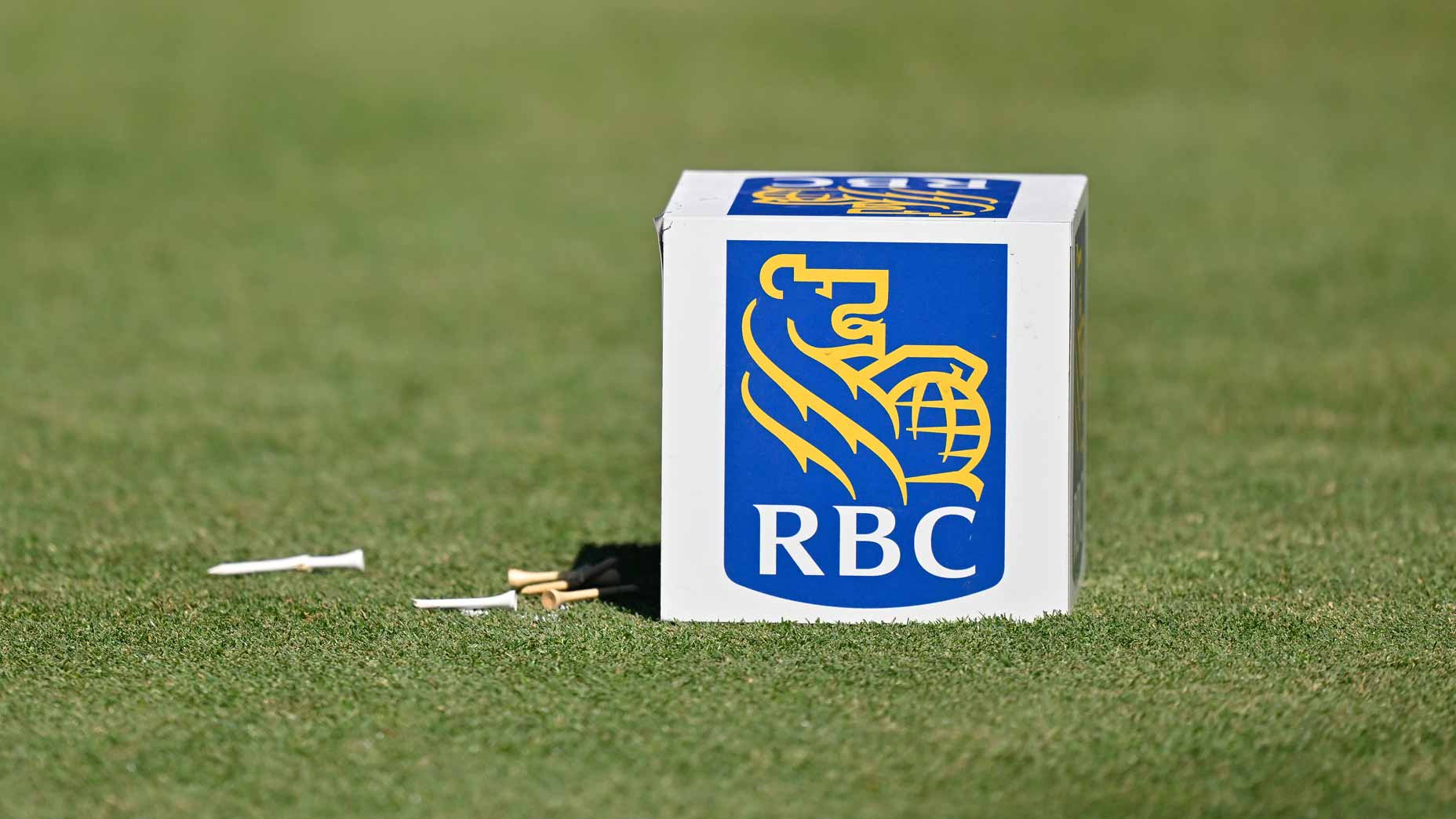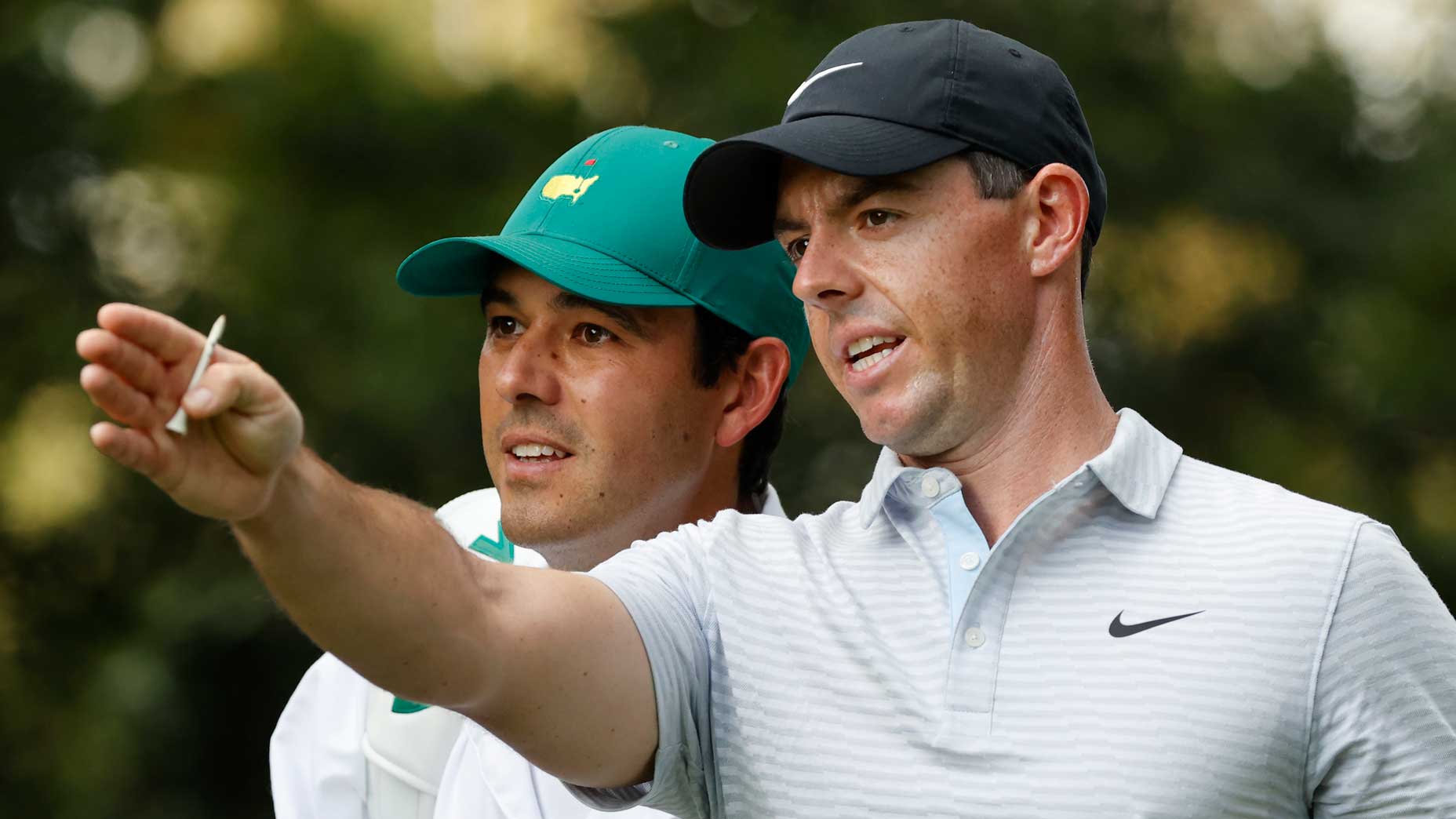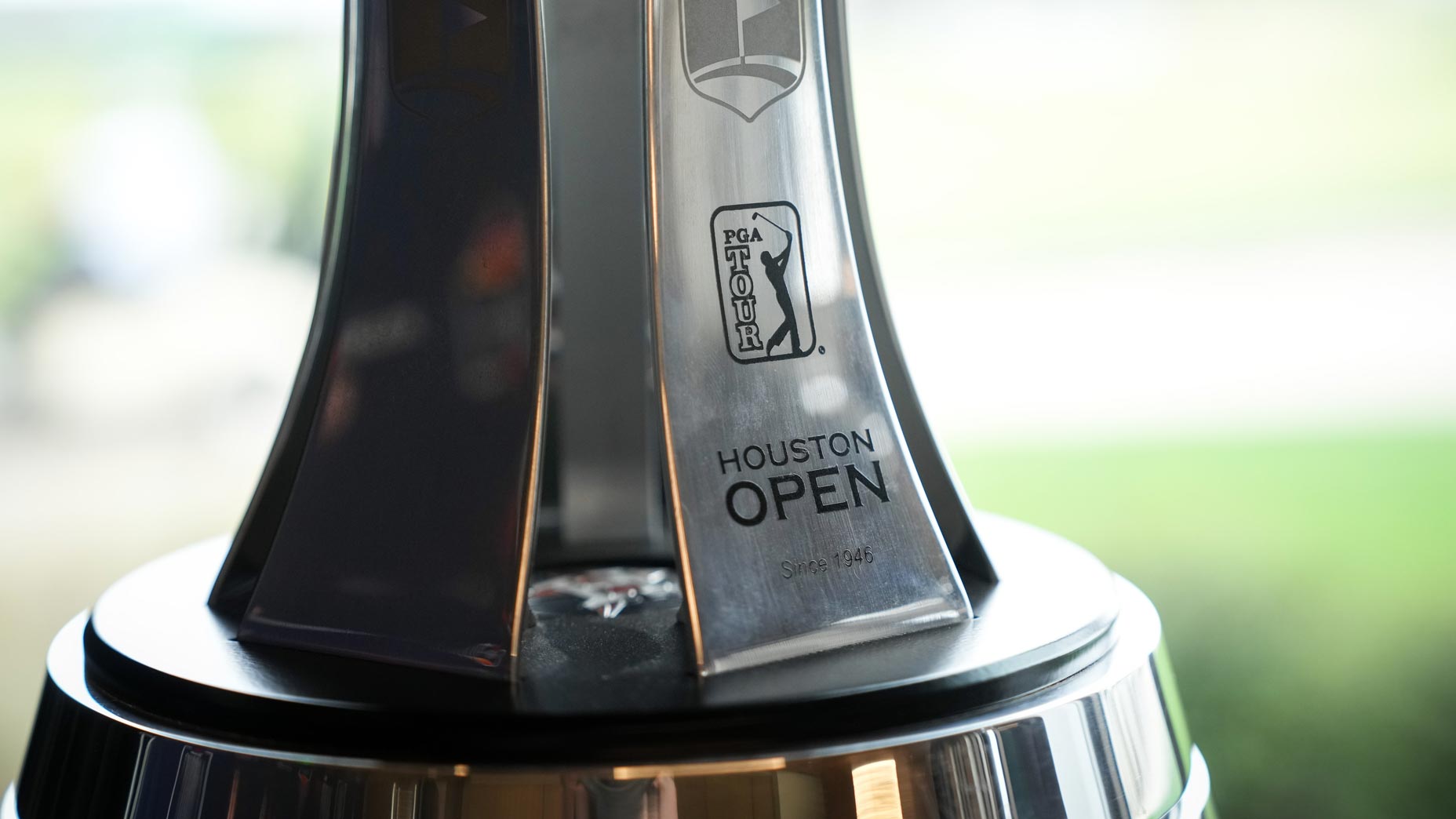Check in every Sunday night for the unfiltered opinions of our writers and editors as they discuss the hottest topics in the sport, and join the conversation by tweeting us @golf_com. This week we discuss the debut of the revisions to the Rules of Golf, the good and bad of on-course player interviews, U.S. Open course setups without Mike Davis, the best LPGA storylines for 2019 and more.
1. The Sentry Tournament of Champions gave us our first glimpse at the long-awaited revisions to the Rules of Golf, and we saw a little bit of everything: Justin Thomas said he can’t take himself seriously putting with the flagstick in, yet Bryson DeChambeau did just that and led the field in Strokes Gained: putting in Round 1. Brandel Chamblee even said he expects nearly every player to putt with the flagstick in by season’s end. We also had DeChambeau calling the new knee-high drop rule “absurd” and saw Webb Simpson elude a penalty for stepping on his ball (it would have cost him a stroke last year). Recognizing it’s a small sample size, what’s your biggest takeaway from week 1 on Tour with the new rules? What worked? What didn’t?
Jeff Ritter, digital development editor (@Jeff_Ritter): Bryson’s right about the knee-high rule: it’s goofy. The flagstick rule is still intriguing, even if it’s hard to imagine a flagstick staying in on a three-footer to win the Masters. But the biggest takeaway? Golf is in for an adjustment period, and rules will remain in the headlines all the way to Augusta.
Josh Sens, writer (@JoshSens): It’s a small sample size but Dave Pelz has played the data out over the long term and found that leaving the flagstick in is indeed an advantage. In that sense, I think DeChambeau was prescient in saying the USGA may live to regret allowing it in professional golf. It makes sense for recreational play if it helps people pick up their agonizing pace. On Tour, that won’t be its effect. It may simply make the game easier for players who are already plenty good enough.
MORE: 12 rules changes you need to know
Sean Zak, assistant editor (@sean_zak): I was stoked to see the Webb Simpson incident. That was one of the most obvious rules that needed to be changed and thankfully it brought about the correct result. Here’s to hoping no one abuses it.
Michael Bamberger, senior writer: The knee-drop looks ridiculous. It exists for a very limited purpose, to stop multiple drops on slopes. I think the professor has it right: a better rule would be to drop anywhere from knee to shoulder height. The flagstick in makes the professional game look amateurish. I like it for us. It looks strange on them. Golfers are creatures of habit. A generation coming up on it might putt with the flagstick in but those on Tour will be slow to change, no matter what Dr. Pelz says. The step-on-ball rule is a definite improvement.
Dylan Dethier, associate editor (@Dylan_Dethier): Well said, all! I’ll just add this — the novelty of these has been kinda fun, no? A wrinkle of intrigue to the TOC.
Alan Shipnuck, senior writer (@Alan_Shipnuck): Kinda. But don’t forget we have dozens and dozens more tourneys to come — I pray we’re not still talking about this stuff come summer time.

2. The Tour tested in-round interviews at the Sentry TOC, with an eye on perhaps incorporating them in more events. Thomas declined an interview, saying, “That’s mine and [caddie Jimmy Johnson’s] time, whether we’re talking about whatever, or even the next shot. For me, there’s no benefit. It’s only going to make me look worse.” Rory McIlroy said he wasn’t asked to do any interviews but said he has told the European Tour no before. (The Euro Tour has been conducting these interviews for a couple of years now.) Are you a fan of this practice, and, if so, should players feel compelled to comply?
Ritter: I don’t blame players for turning it down. That time in between shots is still a time to concentrate and stay in the moment. Anybody here watch MLB broadcasts, where the boothmen interview managers in between innings? Those interviews sound good on paper, but I find they’re usually awkward and rarely add anything to the telecast. I suspect golf may suffer a similar fate.
Sens: Also, interviewing a manager is an entirely different level of interference than interviewing a player. I’m with Jeff on this. If players aren’t comfortable with it, they should be able to opt out. Let their caddies do the talking instead perhaps.
Zak: In theory, in-round interviews are great. In practice, they’re just too complicated. The best-case scenario is mic’ing up players 2-3 times a season and grabbing that audio for all to hear. Players could be as silent as they please, or they could just go about their business as usual. Those interviews are sadly, not business as usual.
Bamberger: All of life has become a glorified TV show. I’m with Thomas. Golf is a quiet game anyhow, or it has been.
Dethier: I wouldn’t mind a quick interview at the turn, sort of like when they grab football or basketball coaches on their way to the locker room. But in general I like when players play, and we watch and listen.
Shipnuck: The real problem is that they won’t ask tough questions at inconvenient times — that would add real value, to get inside the players’ thinking in real-time. Otherwise it’s just boring stuff. Why bother?
"I hit a 7-iron from 130 yards. That's 65 yards short of where I normally hit it." 💨@GaryWoodland is embracing the challenging conditions in Round 2 of the @Sentry_TOC. pic.twitter.com/mpVRd03iGm
— PGA TOUR (@PGATOUR) January 5, 2019
3. USGA top dog Mike Davis has handled every U.S. Open setup since 2005, but he won’t this year. As he transitions into a new role at the organization, Davis is ceding set-up duties to John Bodenhamer, the USGA’s senior managing director of championships. Davis’s tenure as set-up czar undoubtedly had its highs and lows; how would you assess the job he did and the legacy he left behind?
Ritter: The USGA has done a lot to try to grow the game. Over time Davis took some chances — like taking the event to Chambers Bay and Erin Hills. Most would probably say those gambles didn’t pay off, but I’m still glad he took the chances. He also tried to de-emphasize par as a winning score at a U.S. Open, although I’m not sure it worked. And fair or unfair, you could make a case the U.S. Open has slipped in prestige over the last decade. So, while most of his tenure was successful and his heart was in the right place, the missteps left a mark.
Sens: I’m with Jeff on moving the U.S. Open to new venues — a populist move that was great in theory but didn’t play out well in practice. Throw in the rules controversies and the course set-up gaffs, and I think the slip ups are what most people will remember. Some would also argue that the U.S. Open has lost some of its sense of identify, which goes hand in hand with that slip in prestige.
Zak: His legacy, in part, is golf’s Dr. Evil, which is too bad. No one should be painted with such a broad brush (cc: Zach Johnson). But he hasn’t exactly been a beacon of greatness in that role overseeing setups. The one recent year that deserves praise was Oakmont, and we all know how that ended. Here’s to Pebble being host and not the story.
[bc_video video_id=”5983972087001″ account_id=”416418725″ player_id=”B1lrmWbebQ” embed=”in-page” padding_top=”56%” autoplay=”” min_width=”0px” max_width=”640px” width=”100%” height=”100%”]
Bamberger: The USGA is operated by committee. The decision to go to Erin Hills and Chambers Bay came when David Fay was its executive director, but ultimately the decision fell to the president and board. Mike did more to popularize the drivable par-4 than anybody not named Big Bertha. Some of the poor hole positions at U.S. Opens were avoidable. If you had ONE person like Nick Price out there when the holes were actually being cut you’d almost never have a problem. The lifers are absolute savants, and one yard can make a world of difference. The U.S. Open and the USGA tries too hard. That’s in our DNA — I don’t know how you can change that. It needs to take a deep breath and relax.
Dethier: I still think Chambers Bay was awesome and got a bad rap, and even this year’s conditions didn’t offend me like they did Zach Johnson et al. The USGA’s main shortcoming is that it remains the players’ favorite punching bag. It’s rare to see Tour players go after the Tour, but they salivate at the opportunity to take on the USGA. Sounds like that’s a focus going forward; we’ll see how they do.
Shipnuck: Davis is a good guy who truly loves the game and has poured his heart and soul into the USGA. But there were simply too many screwups on his watch. I’ll never forget in 2016, while Dustin was playing the final holes and confusion reigned, I found Davis upstairs in the Oakmont clubhouse, having just taken a shower so he could be fresher for the awards ceremony. It was tragicomic. The tournament was in flames but he didn’t seem to fully grasp the gravity of the situation.

4. Our Jessica Marksbury identified eight LPGA storylines to keep an eye on in 2019. What plot in the women’s game are you most excited to see play out?
Bamberger: Jessica Marksbury, and the rest of us, paying more attention to this exciting form of the game.
Sens: Lydia Ko’s resurgence was good fun to watch last year. Seeing if she can continue her climb back should be compelling. Also: can Lexi take the next step and rise to No. 1?
Ritter: It’s Lexi for me. She’s had a tumultuous couple of years, but the talent is still there. If she can win another major and take a run at No. 1 she could single-handedly put a charge in the sport.
Zak: I wanna see Inbee Park nab another major (or two) against the budding youths of the women’s game. It’s hard to be sure of how long the game’s best women intend to play, and commit to playing, at their best. So while she’s around to do so, I wanna watch.
Dethier: It feels like Michelle Wie’s injury recovery could mark the next stage of her career. How she comes back – and performs going forward — will be fascinating to follow.
Shipnuck: Lydia, for sure. Her win in the spring was cathartic but she didn’t really build on it. Can she be the player she was or is she destined to become the next Yani Tseng?

5. Justin Thomas and Lexi Thompson graced the National League of Junior Cotillions’ list of the “10 Best-Mannered People” of 2018. According to your on-job experience, which two golfers (male and female) would you award for such an esteemed honor?
Sens: Lydia Ko and Tony Finau. If there are more gracious Tour pros out there, I haven’t met them.
Ritter: Two great picks, Josh. I’ll take Stacy Lewis and Bernhard Langer.
Bamberger: Hard not to go with Vijay. On the women’s side, another older-but-goodie: the Hall-of-Famer Meg Mallon.
Dethier: Wow, Vijay! I’ll take Tommy Fleetwood and Juli Inkster.
Zak: Xander Schauffele and Pat Bradley.
Shipnuck: Adam Scott and Lydia Ko.
[bc_video video_id=”5982842635001″ account_id=”416418725″ player_id=”B1lrmWbebQ” embed=”in-page” padding_top=”56%” autoplay=”” min_width=”0px” max_width=”640px” width=”100%” height=”100%”]







